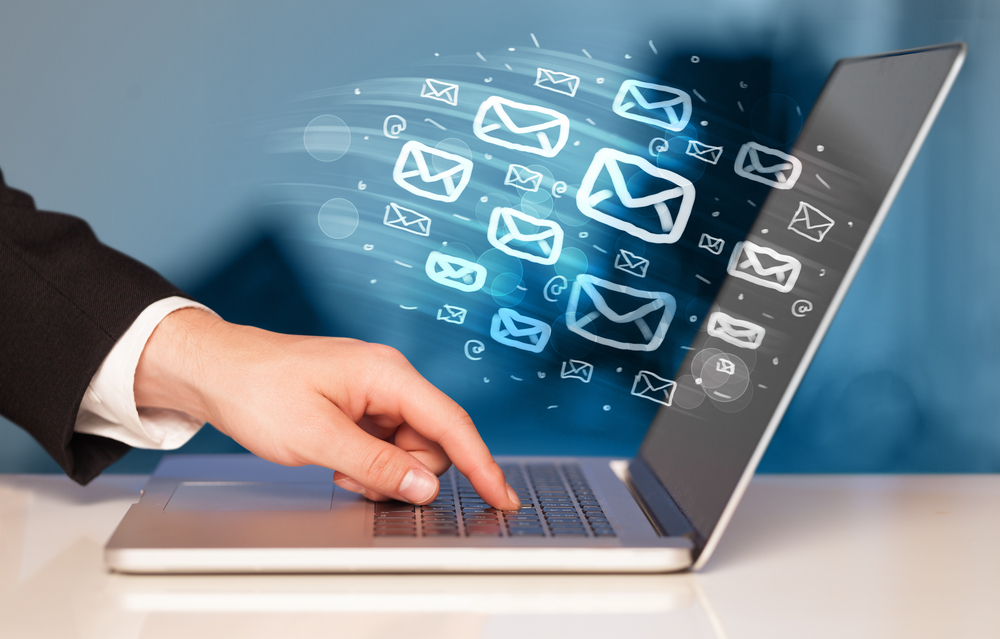Jan 11
E-mail Marketing Best Practices
January 11, 2016
 Facebook, Twitter, WhatsApp, Periscope… the number of social media keeps increasing and provides numerous ways for us to communicate with our customers. One of the first communications tools that arose with the internet, however, was e-mail, and it has not lost its effectiveness or gone out of style with the competition.
“E-mail is still extremely important. It gives you the opportunity to send a message directly to the customer with a personalized and unique offer for each person,” said Mariel Arraiza, Executive Vice President and Director of the Marketing and Intelligence Division of Banco Popular.
It has another advantage over traditional direct mail marketing: it allows measurements that help to define your strategies. The success of a direct mail marketing campaign can only be measured based on return on investment, or in other words, the sales of the product or service advertised after a reasonable time after the mailing.
“With e-mail, by comparison, you not only know if the customer bought the product, but you also know how many people opened the message, began the loan application process and finished selecting the offered product,” Arraiza explained. E-mail provides ideal statistics for optimizing results for your business objectives.
To maximize the potential, you should pay attention to certain details.
Personalize the message
Personalizing the message increases its effectiveness by making the offer more relevant to the customer. However, the level of personalization should be considered carefully, to ensure that the personalization is done correctly, advised Arraiza.
You should also be careful about the number of communications sent to customers to avoid annoying them with an excessive number of e-mails and discouraging them from reading the messages. “You have to be cautious in the volume and in the message the e-mail carries,” she said.
Be strategic in the title
Arraiza also suggested being strategic when coming up with the title or subject line that each e-mail carries. Make it as attractive as possible to the potential customer. “The title of the e-mail is critical to attracting the customer, especially if you send a lot,” she emphasized.
Measure results periodically to optimize mailings
Periodically measuring the results of e-mail in terms of readership and open rate, interaction or click through rate and the number of applications completed can give you an idea of its effectiveness. If e-mail is not effective within a reasonable period of time, you can change the offer or the subject line to make it more attractive to the other customers you plan to send it to.
But what about the person who does not have an e-mail account or has not shared it? In that case, Arraiza suggested resorting to traditional methods, such as direct mail or advertisements inserted in purchase receipts, account statements and others.
Give e-mail a try as a marketing strategy. There are various free or low-cost tools, such as MailChimp, Constant Contact or GetResponse, that can help you optimize the process and take advantage of your company’s mailing list.
Mariel Arraiza was Senior Vice President - Marketing & Customer Knowledge at Banco Popular de Puerto Rico (“Popular”) until April 2016.
This article is for informational purposes only and does not constitute endorsement or guarantee of accuracy or applicability for any particular purpose. Neither Popular nor any of its affiliates, subsidiaries, or related companies is or will be responsible for any special, direct, or indirect damages arising from the information contained in this article. Should you require further information or guidance on the subject of this article, you should always seek the advice of the competent professional of your choice.
Facebook, Twitter, WhatsApp, Periscope… the number of social media keeps increasing and provides numerous ways for us to communicate with our customers. One of the first communications tools that arose with the internet, however, was e-mail, and it has not lost its effectiveness or gone out of style with the competition.
“E-mail is still extremely important. It gives you the opportunity to send a message directly to the customer with a personalized and unique offer for each person,” said Mariel Arraiza, Executive Vice President and Director of the Marketing and Intelligence Division of Banco Popular.
It has another advantage over traditional direct mail marketing: it allows measurements that help to define your strategies. The success of a direct mail marketing campaign can only be measured based on return on investment, or in other words, the sales of the product or service advertised after a reasonable time after the mailing.
“With e-mail, by comparison, you not only know if the customer bought the product, but you also know how many people opened the message, began the loan application process and finished selecting the offered product,” Arraiza explained. E-mail provides ideal statistics for optimizing results for your business objectives.
To maximize the potential, you should pay attention to certain details.
Personalize the message
Personalizing the message increases its effectiveness by making the offer more relevant to the customer. However, the level of personalization should be considered carefully, to ensure that the personalization is done correctly, advised Arraiza.
You should also be careful about the number of communications sent to customers to avoid annoying them with an excessive number of e-mails and discouraging them from reading the messages. “You have to be cautious in the volume and in the message the e-mail carries,” she said.
Be strategic in the title
Arraiza also suggested being strategic when coming up with the title or subject line that each e-mail carries. Make it as attractive as possible to the potential customer. “The title of the e-mail is critical to attracting the customer, especially if you send a lot,” she emphasized.
Measure results periodically to optimize mailings
Periodically measuring the results of e-mail in terms of readership and open rate, interaction or click through rate and the number of applications completed can give you an idea of its effectiveness. If e-mail is not effective within a reasonable period of time, you can change the offer or the subject line to make it more attractive to the other customers you plan to send it to.
But what about the person who does not have an e-mail account or has not shared it? In that case, Arraiza suggested resorting to traditional methods, such as direct mail or advertisements inserted in purchase receipts, account statements and others.
Give e-mail a try as a marketing strategy. There are various free or low-cost tools, such as MailChimp, Constant Contact or GetResponse, that can help you optimize the process and take advantage of your company’s mailing list.
Mariel Arraiza was Senior Vice President - Marketing & Customer Knowledge at Banco Popular de Puerto Rico (“Popular”) until April 2016.
This article is for informational purposes only and does not constitute endorsement or guarantee of accuracy or applicability for any particular purpose. Neither Popular nor any of its affiliates, subsidiaries, or related companies is or will be responsible for any special, direct, or indirect damages arising from the information contained in this article. Should you require further information or guidance on the subject of this article, you should always seek the advice of the competent professional of your choice.



